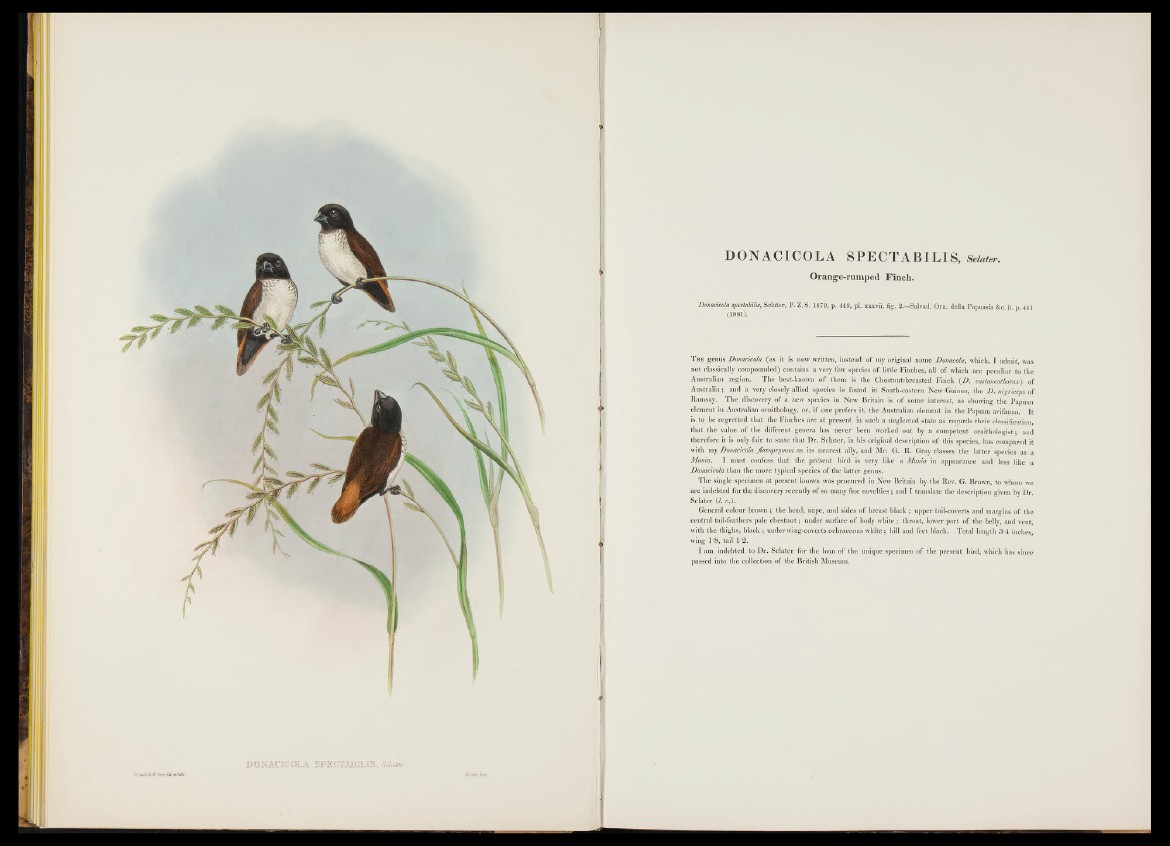
D ONACICOLA SPECXABILIS, Sckder.
DONACICOLA SPECTABILI S , Sclater.
Orang*e-rumped Finch.
Donacicola spectdbilis, Sclater, P. Z.S. 1879, p. 449, pi. xxxvii. fig; 2;—Salvad. Orn. della Papuasia & c.ii. p. 441
(1881).
T h e genus Donacicola (as it is now written, instead o f niy origiiial name Donacola, which, I admit, was
not classically compounded) contains a very few species o f little Finches, all o f which are peculiar to the
Australian region. The best-known o f them is the Chestnut=breasted Finch (D. castaneothorax) of
Au stralia; and a very closely allied species Is fottnd irl South-eastern New Guinea, the D. nigriceps of
Ramsay. The discovery o f a new species in New Britain is of some interest, as showing the Papuan
element in Australian ornithology, or, if one prefers it, the Australian element in the Papuan avifauna. It
is to be regretted th at the Finches are at present in stldh a neglected state as regards their classification,
th at the value of the different genera has never been worked out by a competent ornithologist; and
therefore it is only fair to state th at Dr. Sclater, in his original description o f this species, has compared it
with my DondckOla Jlatoprymna as its nearest ally, and Mr, G. R, Gray classes the latter species as a
Munia. I must confess th at the present bird is very like a Mttnia in appearance and less like a
Donacicola than the more typical species of the latter genus.
T h e single specimen a t present known was procured in New Britain by the Rev. G. Brown, to whom we
are indebted for the discovery recently o f so many fine novelties; and I translate the description given by D r.
Sclater (/, c.).
General colour brown ; the head, nape, and sides o f breast black ; upper tail-coverts and margins o f the
central tail-feathers pale c h e stn u t; under surface o f body white ; throat, lower p art o f the belly, and vent,
with the thighs, black ; under wing-coverts ochraceous wh ite ; bill and feet black. Total length 3*4 inches,
wing 1*8, tail 1*2.
I am indebted to D r. Sclater for the loan o f the Unique specimen o f the present bird, which has since
passed into the collection o f the British Museum,